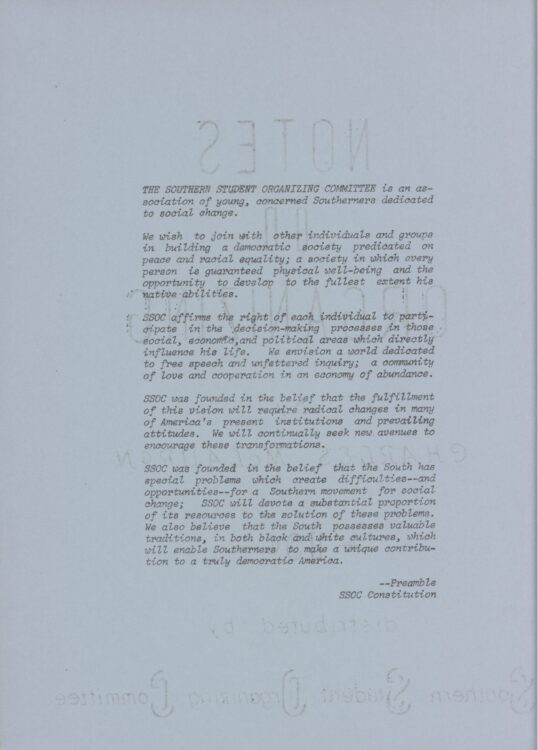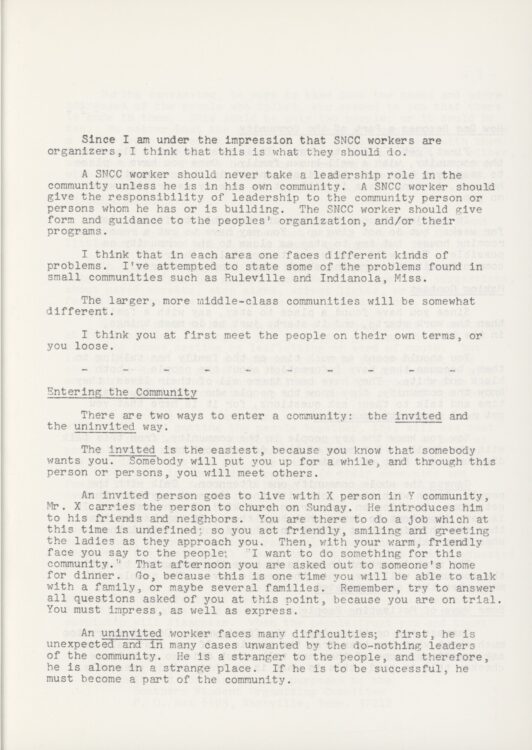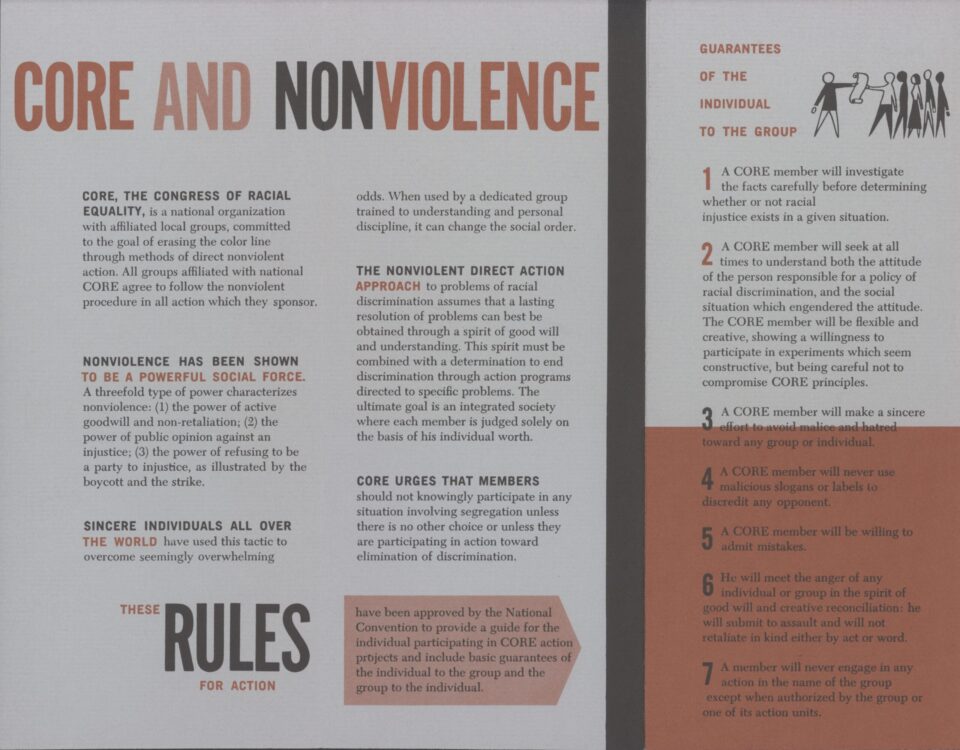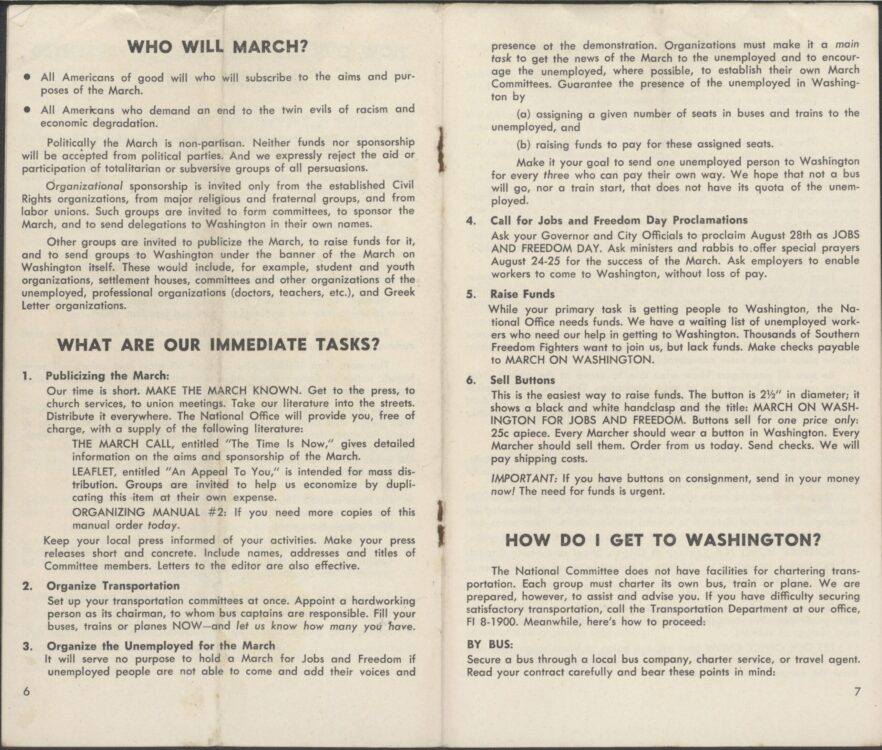Involvement in activism was not as simple as sitting at a lunch counter or grabbing a sign and joining a picket line. Every sit-in, march, boycott, and freedom ride required thorough planning before the demonstration took place. The three items shown here are examples of resources that people involved with the movement used to improve their effectiveness as forces for change.
Several initiatives that took place in the South involved people from the North travelling to rural communities and organizing resistance to systemic racism. However, this arrangement ran the risk of outsiders taking power away from those who lived in the community and plotting their future for them, rather than with them. This “Notes on Organizing” booklet, aimed at SNCC workers active in the South, discusses how to enter a community respectfully and ensure local leaders remain in charge.
Like other large civil rights organizations, the Congress of Racial Equality (CORE)—perhaps best known for organizing the 1961 Freedom Rides—had chapters across the country. Levels of activism experience and training among the membership depended on the chapter, which could lead to difficulty for some as they worked to confront local issues. This “Rules for Action” pamphlet was circulated in an effort to ensure that all CORE chapters conformed to the same standards of operation no matter who their members were or what injustices they were attempting to challenge, while also adhering to the organization’s principles of nonviolence.
The March on Washington for Jobs and Freedom has been seared into cultural memory as a massive crowd of people packed onto the National Mall, listening to speakers such as Martin Luther King Jr. address them from the Lincoln Memorial. What is often not covered in history classes, however, is just how much coordination it took to organize this event. Copies of this booklet were circulated across the country shortly before the march took place, providing information about what organizations were sponsoring the event, how groups traveling to Washington should be organized, and what facilities would be available on-site, along with codes of conduct and a list of the legislative demands being put forth by the march’s leaders.





